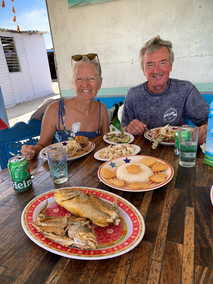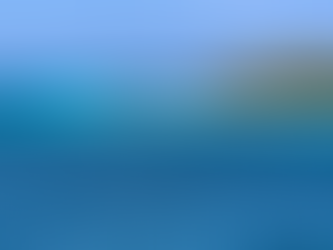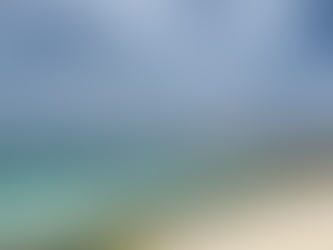Blue Seas, Light & Reflections
- Peter

- Jun 29, 2024
- 11 min read
Hurricane Season (June 1st to Nov 30th) is upon us again and if we can trust NOAA (National Oceanic and Atmospheric Administration), the season should be with “above normal” activity, which means that they expect more storms and hurricanes than the previous year.

For us, we are safe and secure, tucked in below the hurricane zone, currently in Bonaire and heading next month for Curacao, where we will haul out, re-do the hull waxing and bottom anti fouling to keep our Deva in top condition. These islands are below the area where hurricanes frequent, though there is always a small risk that one may come to visit.
Atmospheric conditions have been quite a topic over the last months in different ways for us. With a little envy, we have seen some amazing photos of the aurora borealis from northern Europe as we know we will not see it from our position just above the equator. Unfortunately, here in the trade wind zone we are currently affected by a sprinkling of red dust from the Sahara Desert.

In the past, other than the red colour, we did not really know where this dust was coming from. Now, as a part of our weather forecasting programs we can see a multitude of atmospheric information that include pollution and the dust levels. On the world map, we see a trail of dust that originates from the Sahara, crosses the Atlantic Ocean to the Northern Coast of South America, (we are in its path) and then it spreads out in a curl back to the Atlantic Ocean.
The darker the shading, the greater concentration of dust in the air.
The dust is so very fine – almost like a powder and it sticks to the ropes, our canvas, the stainless steel and the decks. Surprisingly, complaining makes little difference and the only solution is to get out with the water hose, a brush, some soap and a lot of elbow grease. After an hour or two, the boat is shiny and new again – until the next sprinkling of red !

We had a different kind of experience with atmospheric light and colours in Los Roques. The colour of the sea in this archipelago is quite amazing; sometimes we saw 4 or more different shades of blue, ranging from Ultramarine to Aquamarine, in the same view. In the conditions of the brightest sunlight the reflection of the colour of the sea was seen on the white feathers of the seabirds so that they appeared to be turquoise or blue in colour as they flew above the water. I hope that you understand that with my iPhone it was not possible to take a meaningful photo of a turquoise seabird at 25 metres, the image only remains in my mind’s eye and I hope that I have managed to describe what we saw

I must talk a little about Los Roques as our visit there was exceptional. This little archipelago belongs to Venezuela and it situated about 60 km north of Caracas where it has been a national park since 1974, its beauty is that it is virtually unspoilt and there were very few other sailing boats visiting these islands. The few visiting boats are partly due to the recent historic problems with Venezuela, it is expensive to visit and simply that the islands are a little “out of the way”, depending on where you are coming from and where you are going.

Before we came to the Caribbean, we imagined many deserted bays, white sandy beaches with palm trees, small local restaurants that grilled fish and sold cold beer. We did not find so much of this and in place of deserted bays and beaches we sometimes felt that we were entering a floating camp site. On the positive side, we did find infrastructure, marinas, new friends, restaurants, chandlers, fuel and marine services – all of which has been a great help to our positive sailing experience. However, we did silently “miss” what we had hoped to find.
There are maybe 2 important things to note about Los Roques:
1) It is safe, safe from pirates, unscrupulous officials and anything to disrupt a great stay
2) You can check-in/out and do all these things yourself, but if you use the Yacht Services of Alejandro, it is even easier, better and it is positively supporting the local economy.
The fees of Alejandro are shared in the community to help with the smooth running of arrival and departure. In addition, he gives an excellent support service, whether you want to buy fish, book a restaurant, visit your favourite kite site, or are looking for that difficult path through the lagoons to that anchoring spot that you wish to go to.
Los Roques is not a cheap place to visit. It actually is a playground for the rich & famous of Venezuela and South America. We paid $1,450 for the 2 weeks, which is the maximum length of time that we were allowed to stay with our boat, but we do think it was worth it. Especially if you consider that we only went out one time for lunch ($60 for 2 people) and bought some fish, as there was little else to spend money on. If you compare that to a marina for the same period of time then the costs are not too far apart – it just depends on what you want and what you are looking for.

We met a number of visiting Venezuelans during our stay. Some were fishing from their own boat, others were experiencing the pleasure of fly fishing for mackerel and kingfish as they followed the ever-hungry sea birds along the beaches. Some were dancing samba on what they thought were deserted beaches, until we turned up to say hello ! In all cases, everyone was very friendly and the fishermen shared their catch with us (poor hungry people) and the dancing couple offered us their private jet to take us to Caracas, should we be interested. We saw the Venezuelan Coast Guard help the economy by taking Argentinian tourists to visit the islands and join us for lunch at one of those restaurants where they serve lobster, fresh fish and cold beer on a deserted beach with nothing but a vista of an amazingly colourful blue bay.
We also learnt that the safest time to navigate in the shallow lagoon waters is between 10:00 am and 2:00 pm, when the sun is overhead. At this time the colours are the most vivid and it is easiest to identify the shallowest water areas. A dark ultramarine would be the colour of the deepest water, a light aquamarine for the shallow water and every blue shade between that shown the different bottom conditions and different water depths. The most dangerous are the browns as these are usually coral heads or coral reefs that would happily shipwreck a captain who was not paying enough attention. Our ship has a deep keel, so we needed to be extra vigilant in the light blue waters to avoid running aground and, better still, keep to the suggested tracks. Note the colours on the photos below.

It was lovely to see the seabirds congregating where the fish came close to the surface as they squawked and fought over the fish they caught. It was also an indication to me that there were fish in the area and lines needed to be thrown in to have the catch of the day. I think I caught more fish in Los Roques than anywhere else since we started sailing. Our freezer was soon full with kingfish, barracuda, amberjack and snappers, which was great for us and the visitors we have had onboard since Los Roques. Unlike the northern Caribbean the fish here is free of “ciguatera” and therefore is safe to eat. Ciguatera is a toxin that builds up in some reef fish and can be a poison to humans, though not always fatal.
We also had some excellent snorkelling around the reefs and rocky outcrops with turtles, sea stars and many, many reef fish that we can’t always remember the names of. To swim amongst them is always a pleasure.
Grande Roque, the main island of Los Roques was actually quite a large hilly island in comparison to the rest of the sandy islands of the archipelago. The streets of the town were made of sand and there were only 2 delivery trucks to distribute the goods brought in by containership to the bars, restaurants and supermarkets. Due to a ship breakdown and some rough weather, there had not been a food delivery to the island for almost 2 weeks when we arrived. I think that it was not a great problem due to the abundance of fish, but fresh fruit and veg were quite scarce.

On our first day in Grande Roque, we checked in first with customs at one end of the town and had to walk through to the other end of town for immigration, which was situated beside the small local airport. Alejandro suggested that we enjoy a cool drink in the beach bar while immigration took the passports and did their necessary paperwork.
In the bar there was one other European, who we thought we recognised but were not very sure. When we caught his eye, his face lit up with a smile and came and shook my hand and gave Ingrid a big hug – it was almost as if he had been shipwrecked on a desert Island and not seen another westerner in years.

We had actually met this Dutchman, Ulbe , the year before in Curacao Marina, where his boat was a short distance from ours on the jetty and he passed us several times a day. Often stopping for a friendly chat or just to say hello. Unfortunately, he did have a sad story to tell for him being in the bar in Grande Roque as his boat had actually been shipwrecked on the outer reef of the archipelago a few weeks earlier. His story was that they were sailing from Grenada to Curacao and due to an instrumentation error, they ended up on a course to Los Roques, which is only a few degrees different to the straight line between Grenada and Curacao. At 1am, they realised that they were off course and heard the sound of breaking waves and were being washed up, onto the outer reed of Los Roques. It was too late to save the boat and the only thing they could do was to send a “Mayday” call and hope that it would be picked up. At this time of night in such a remote location was a small hope for any chance of rescue and Jan and his crew thought that their end was very near. If you have ever seen the jagged rocks that make up these reefs, there is little chance that a person could survive the combination of the rocks and the crashing waves. As it happened, that night there was a particularly good movie on TV that the crew of the Venezuelan Coast Guard were watching and they picked up the mayday call and came to the rescue of the Dutch boat in a very short space of time. Their prompt action saved the lives of 2 people who escaped only in the clothes they stood in.
The consequent problem was that without passports, money, clothes and a means of transport, they were really stranded on a desert island. The insurance of the boat would pay for their return to The Netherlands, but all this takes some time to organise and Jan and his crew were dependent on the generosity of the Coast Guard, who shared their accommodation and gave them money for food and drink while the insurance process went on.
We met them about 2 weeks after the incident – no wonder they were happy to see other westerners ! The experience was very traumatic for them, Ulbe clearly still shaken whilst recounting the story and Ulbe’s other crew member, Joey, vowed never to set foot on another sailing boat again in his life.
The story made us happy to know that our safe procedures of detailed passage planning, hourly logs entry and the use of both electronic charts and paper charts are essential for safe navigation. We think that following these standard procedures would have helped to avoid getting into such a dangerous situation. There have been a number of times that we planned a trip between 2 points, in a straight line, only to notice that there were actually some tiny islands directly on our route ! So, our passage planning needed to be modified to avoid the risk of ending up on a tiny reef in the middle of the ocean.

We did spend an excellent time amongst these islands and at the end, from the Western side of the archipelago, Alejandro organised for our passports to be picked up, stamped out and returned to us without having to travel back to Grande Roque in the east.
After our checkout, we sailed onto Las Aves, another small island about 40 miles to the west of Los Roques to spend our last night in Venezuela. From there we sailed onto Bonaire where we are currently in the marina.
Last year we spend 6 weeks here and we will do the same this year. Taking time out to dive, snorkel, swim, to clean, do maintenance, cleaning (and more cleaning) and to meet with old and new friends from the sailing community and from Bonaire.

The pace of life is purposefully slow here and we have just enjoyed not rushing anywhere, but taking our activities at a slow and relaxed speed. Looking at flamingos, as they congregate in the salt marshes at the south of the island, where they prepare themselves for their daily flight to Venezuela. You may ask why do they fly every night to Venezuela, well the answer is quite obvious – it is just too far to walk!
We sat on camping chairs and chatted with friends, a bottle of wine and some beers between us and a picnic as the sun slowly set on the longest day of the summer solstice. We watched the flamingo’s group together, fly around, come back and about half of them finally set off to Venezuela before it got dark. What a great night’s entertainment from this beautiful world that we live in.
Bonaire is just exceptional for diving. The shallow sandy shelf around the island drops off quickly to great depths. The drop off starts at about 10m depth, with crystal clear water and has abundant corals and fish. There is nothing specifically large or exciting, but every dive is like a relaxed walk in the most beautiful garden. Every dive site, and there are 88 marked sites, is just like a different part of the garden to swim through. We were lucky enough to see 3 sea horses on 2 different dives, our first ever sea horses in the wild.
5 Days after full moon is an exciting moment in the night diving world of Bonaire. On this specific day after every full moon, 45 minutes after sunset, it is the hour of mating for a small group of crustacea called ostracods. These little animals live in the soft corals in about 5 metres of water depth.
You may not think that viewing the mating habits of 1mm long crustacea is very exciting, but in fact it is much more than exciting it is just magical to watch. With Dan and Alex, our diving friends from Bonaire, we drove up to “Webbers Joy” dive site, where there is an abundance of soft corals in the shallow waters before the edge of the reef and drop off to the depths.
Sunset was at 19:01 and so we were geared up and ready by this time, a little early but we were excited for what was to come. After about 15 minutes of passing the time talking, we decided that we should find our spot and get ourselves ready for our viewing. It was still twilight, so we could see each other but we did not use any underwater lights as this would spoil the event. At almost exactly 45 minutes after sunset, we saw the first cluster of lights; the male ostracods spit out a bioluminescent saliva that forms a point of blue light in their attempt to attract an interested female. They spit a series of globules of saliva that appear as ascending or descending lights, leaving a pinpoint trail of 5 to 10 lights with faint bioluminescence in between. This is going on all around us now with 2-3 ostracods per square meter. The bioluminescence is mixed in with the upper parts of the soft corals, making a kind of magical Christmas scene of trees with fairy lights on them for as far as we could see.
We watched this phenomenon for almost 30 minutes, transfixed by the beauty of nature, until the little guys had enough sex and were ready for their dinner and a sleep. As quickly as the lights came on, 45 minutes after sunset, the intensity of the lights faded to the blackness of a moonless night dive.
We will not have another full moon in Bonaire before we depart, so our last dives will be just relaxed daylight ones.
Another couple of weeks now before we sail onto Curacao for our final Hurricane Season resting place. We will haul the ship out of the water, give it a good clean and a fresh coat of anti-fouling, so we will be ready for the next sailing season, wherever it takes us.

I almost forgot, on the way to Los Roques, we passed a geographical coordinate that matched our wedding day, I thought it was lovely to see this !























































































































Hope you are save with the new Beryl hurricane passing nearby.
DB from Asheville, NC
Glad to see you are doing good and look’s younger.
Shine New materials should sponsor the coating on OceanDeva.
Stay Safe.
Regards from Abu Dhabi.